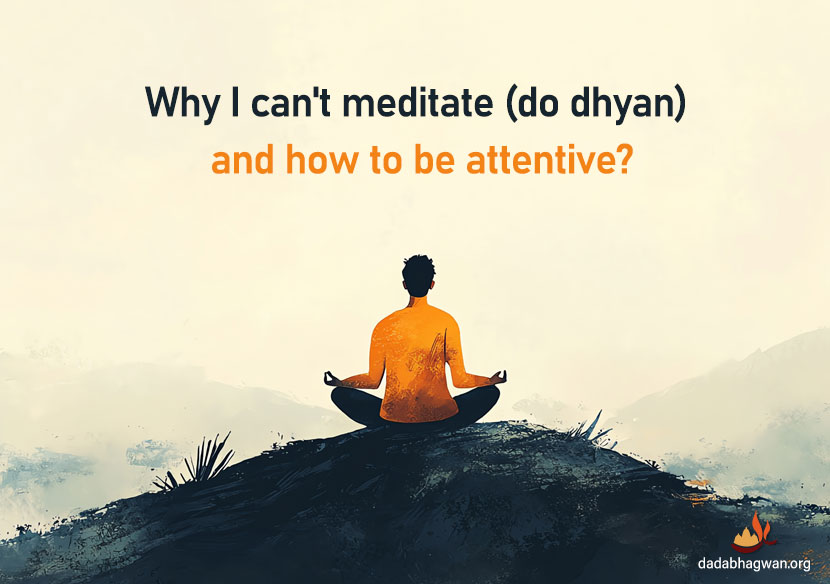Why I can't meditate (do dhyan) and how to be attentive?

The only thing the Lord asks is whether You were attentive (in dhyan) or inattentive (bedhyan). Yes, there was no inattentiveness (bedhyan). One was aware of 'I can't do it,' and the other person had the awareness (dhyan) of 'I can do it.' There are no other issues. It is one and the same thing, whether You look at it this way or that way. If you were to turn and face this way, this would be your back; and if you were to turn around and face the other way, this would be your back.
So 'we' acknowledge this negative-wrong of 'I cannot do it.' But 'I, as the Seer' do not have to give in to it, be moved by it. So all the obstacles or anything else would all go away. The obstacles will say, 'We cannot conquer him. He is doing the contrary.' If one direction or way is not working out for 'us,' 'we' simply turn the other way. Then if 'we' go forward in that direction, it will be contrary to this side, so then 'we' turn the other way. Direction will keep on changing, but it is all the same. But there, one should not become unaware (bedhyan). If the dhyan is on 'I can't do it…I can't do it…' that should be the only thing that prevails, then you should not be thinking of your home or anything else. Here Dadashri's hair looks all grey. For some people in their dhyan they look all black. There is no problem with that.
What is of significance to us all? It is whether there was unchanging meditation (ekagra dhyan) or not? When can it be said that dhyan has occurred? It is when there is only one thing in the dhyan (ekagra). Elsewhere, when people recite the Lord's name 'Ram… Ram,' that is not dhyan.
And this dhyan is called 'Dadayi' dhyan (meditation as awakened by Dadashri, the Gnani Purush, meditation as the Self). That is considered a wonder! The one doing the meditating (dhyan) is 'Chandubhai*,' the one experiencing the dhyan is 'Chandubhai*,' and the Knower (jaannaar) is the Self. So You know that the meditation is not occurring properly when you say 'I can't do it, I can't do it.' The Self of the other person knows that, 'it is occurring, it is occurring.'
*Chandulal - Whenever Dadashri uses the name 'Chandulal' or the name of the person Dadashri is addressing, the reader should insert his or her name for exact understanding.
subscribe your email for our latest news and events





